Mastering Life Drawing: A Complete Guide
Life drawing is not just a skill; it's an artistic journey that allows you to connect deeply with the human form. Whether you're a beginner or an advanced artist, mastering life drawing can significantly enhance your artistic capabilities. In this comprehensive guide, we will explore essential techniques, tips, and resources tailored to help you develop a profound understanding of human anatomy and form. Imagine being able to capture the essence of your subject with just a few strokes of your pencil. Sounds exciting, right? Well, let's dive into the world of life drawing!
Why is life drawing so crucial for artists? Well, it serves as the backbone of artistic development. By engaging in life drawing, you sharpen your observational skills, which are fundamental in capturing the world around you. Observing a live model teaches you how to see beyond the superficial and appreciate the subtleties of form, light, and shadow.
Moreover, life drawing enhances your creativity. It pushes you to think outside the box, experimenting with different styles and techniques. It's like a workout for your artistic muscles; the more you practice, the stronger you become. In essence, life drawing lays a strong foundation for various art forms, whether you're into painting, sculpture, or digital art.
Before you jump into drawing, it's vital to have the right tools at your disposal. Think of your drawing materials as the instruments of a musician; they can make or break your performance. Essential tools for life drawing include:
- Pencils: Different grades for varying techniques.
- Paper: A variety of textures and weights.
- Erasers: Kneaded and vinyl for precision.
Investing in quality materials not only enhances your drawing experience but also contributes to the overall quality of your work. So, let's explore some of these tools in detail!
The type of paper you choose can drastically affect your drawing results. Different papers offer unique textures, weights, and sizes, which can influence how your pencil glides across the surface. For instance, a heavier paper can absorb more graphite, allowing for richer shading, while a lighter paper may be better suited for quick sketches.
Here's a quick breakdown of popular drawing paper types:
| Type | Best For |
|---|---|
| Sketch Paper | Quick studies and practice |
| Watercolor Paper | Mixed media and washes |
| Mixed Media Paper | Versatile use with different mediums |
When selecting paper, consider your drawing style and techniques. Do you prefer detailed work or quick sketches? Choose a paper that complements your approach. Remember, experimenting with various papers can lead to surprising results!
Now that you have your tools ready, let’s talk about some fundamental drawing techniques that every artist should master. Techniques like gesture drawing, contour drawing, and shading are essential for creating depth and realism in your work. Gesture drawing, for instance, captures the movement and essence of the figure, while contour drawing focuses on the outline, helping you understand the form better.
Understanding human anatomy is critical for life drawing. It’s not just about how to draw; it’s about knowing what you’re drawing. This knowledge allows you to portray the human body accurately, respecting its proportions and muscle structure. Think of it as learning the language of the body—once you understand how it works, you can express it artistically.
Capturing accurate proportions is key to effective life drawing. Guidelines such as the head-to-body ratio can help you maintain balance in your work. Remember, the average adult human body is approximately 7.5 heads tall. Keeping these proportions in mind will enhance the realism of your drawings.
Muscle structure greatly influences how the body looks in motion. Understanding the placement and function of muscles can help you portray dynamic poses effectively. Think of the human body as a well-oiled machine; each part works together to create movement and form. Knowing how these parts interact will elevate your life drawing skills.
Selecting and working with life drawing models is crucial. A good model can inspire creativity and enhance your drawing experience. Communication is key; make sure to discuss poses and comfort levels before starting your session. Creating a relaxed atmosphere will yield better results and allow for more natural poses.
Different models can influence your drawing style. Variety in poses and body types can challenge you and help you grow as an artist. Embrace the differences and use them to expand your skill set!
When working with models, it's essential to maintain a sense of professionalism and respect. Always prioritize consent and ensure that your model feels comfortable throughout the session. This ethical approach will foster a positive environment for both you and your model.
Consistent practice is the secret sauce to improving your life drawing skills. Establishing a drawing routine can help you stay disciplined and creative. Aim for regular sketching sessions to keep your skills sharp. Remember, even the great masters practiced daily!
Creating a routine doesn’t have to be boring. Set aside dedicated time for drawing that fits your lifestyle. Whether it's early morning or late at night, find a time that works best for you. Consistency will lead to improvement.
Don't shy away from seeking constructive criticism. Feedback from peers and instructors can provide valuable insights and new perspectives on your work. Think of it as having a personal coach guiding you on your artistic journey.
To aid in your journey of mastering life drawing, a wealth of resources is available. From books to online courses, there’s something for everyone!
Here are some essential readings that can provide insights, techniques, and inspiration for life drawing enthusiasts:
- Drawing on the Right Side of the Brain by Betty Edwards
- Figure Drawing for All It's Worth by Andrew Loomis
- Bridgman's Life Drawing by George Bridgman
There are numerous online platforms offering courses and tutorials to help you enhance your life drawing skills at your own pace. Websites like Skillshare and Udemy provide a range of options, from beginner to advanced levels.
Q: How often should I practice life drawing?
A: Aim for at least a few times a week to see consistent improvement.
Q: Do I need to take a class to improve my life drawing skills?
A: While classes can be beneficial, self-study and regular practice are equally effective.
Q: Can I use photographs instead of live models?
A: While photographs can be helpful, drawing from life provides a unique understanding of form and movement.

The Importance of Life Drawing
Life drawing is not just an exercise; it’s a transformative journey for artists of all levels. Why is it so crucial, you ask? Well, think of it as the foundation of a house. Without a solid base, everything else can crumble. Life drawing enhances your observational skills, which are essential for capturing the world around you. When you draw from life, you train your eyes to notice the subtle nuances of form, light, and shadow. This practice enables you to translate what you see onto paper with remarkable accuracy.
Moreover, engaging in life drawing sessions fosters your creativity. You’re not merely replicating what you see; you’re interpreting it through your unique lens. This interpretation can lead to unexpected artistic breakthroughs, allowing you to explore new styles and techniques. It’s like having a conversation with the model—each line you draw tells a story, and every stroke can reveal your personal artistic voice.
Another significant aspect of life drawing is its role in building a strong foundation for various art forms. Whether you aspire to be a painter, sculptor, or digital artist, the skills you acquire from life drawing are invaluable. Understanding human anatomy, proportions, and movement can elevate your work to new heights. Here’s a brief overview of the key benefits:
- Improved Observation: Learning to see and replicate the human form accurately.
- Enhanced Creativity: Exploring your artistic voice through interpretation.
- Foundation for Other Art Forms: Skills applicable to painting, sculpture, and beyond.
In essence, life drawing is the bridge between observation and creation. It allows you to take the raw material of the world and mold it into something uniquely yours. So, if you’re looking to sharpen your skills and deepen your understanding of art, life drawing is the way to go. It’s not just about the final product; it’s about the process—the growth, the learning, and the joy of creating. Embrace it, and you’ll find that your artistic journey becomes richer and more fulfilling.

Essential Tools and Materials
When it comes to life drawing, having the right tools and materials can significantly enhance your experience and the quality of your work. Just like a chef needs the right knives and ingredients to create a masterpiece, an artist requires specific supplies to capture the essence of the human form. So, what exactly do you need to get started? Let's dive into the essential tools and materials that every aspiring life drawer should consider.
First and foremost, pencils are your primary weapon in this artistic journey. While many artists prefer traditional graphite pencils, others enjoy the versatility of colored pencils or charcoal. Each medium offers a unique way to express your creativity. Graphite pencils, for instance, allow for a range of shading techniques, while charcoal can create bold, dramatic lines. It's beneficial to experiment with various types to see which aligns best with your style.
Next up is paper. The choice of paper can dramatically influence your drawing experience. You’ll want to consider factors like texture, weight, and size. For instance, heavier papers can handle more intensive techniques like wet media or heavy shading, while lighter papers are great for quick sketches. In the following sections, we’ll explore how to choose the right paper for your life drawing sessions.
Choosing the right paper is like picking the perfect canvas for a painting; it sets the stage for your artwork. The texture of the paper can either enhance or hinder your drawing process. For life drawing, a smooth surface is often preferred for detailed work, while a textured surface can provide interesting effects and depth.
| Type of Paper | Best For |
|---|---|
| Sketch Paper | Quick studies and rough drafts |
| Watercolor Paper | Mixed media and wet techniques |
| Mixed Media Paper | Versatile use with various mediums |
Additionally, consider the size of the paper you choose. Larger sheets allow for grand, sweeping movements and can capture the full essence of the pose, while smaller sheets can facilitate quick sketches and studies. Finding the right balance between size and comfort will enhance your drawing experience.
When selecting paper, think about your drawing style and the techniques you plan to use. If you enjoy detailed, intricate work, opt for a heavier, smoother paper that can withstand repeated erasing and layering. On the other hand, if you’re more inclined towards expressive, loose sketches, a lighter, textured paper may be more suitable. Always remember to test a few sheets before committing to a large purchase, as this can save you time and money in the long run.
Alongside your pencils and paper, don’t forget about erasers. A good eraser can be an artist's best friend, allowing you to correct mistakes or lighten areas of your drawing. There are various types available, from kneaded erasers that can be molded into any shape to precision erasers that can tackle fine details. Having a selection of erasers on hand can help you achieve the desired results in your life drawing sessions.
Finally, consider investing in a comfortable drawing board. Whether you’re at home or in a studio, a sturdy surface can make a world of difference in your posture and overall drawing experience. A portable drawing board can also be beneficial if you plan to draw in various locations.
In conclusion, equipping yourself with the right tools and materials is essential for mastering life drawing. From pencils to paper and erasers to drawing boards, each element plays a crucial role in your artistic journey. Take the time to explore different options and find what works best for you. Remember, the right tools can help unlock your creative potential and elevate your art to new heights!
- What type of pencil is best for life drawing? Generally, a range of graphite pencils (2H to 6B) is recommended for different shading techniques.
- Can I use any type of paper for life drawing? While you can use various types, it's best to choose paper designed for drawing to achieve optimal results.
- Do I need a special eraser for life drawing? It's helpful to have different types of erasers, such as kneaded and precision erasers, for various corrections.

Choosing the Right Paper
When it comes to life drawing, the paper you choose can significantly impact your overall experience and the quality of your work. Selecting the right paper isn't just about picking something that looks nice; it’s about understanding how different types of paper can interact with your drawing techniques and materials. Think of it as choosing the right canvas for a painting—it sets the stage for your creativity to shine.
One of the first considerations is the texture of the paper. Different textures can yield different results in your drawings. For instance, a smooth paper is ideal for fine lines and detailed work, while a textured paper can add depth and character to your sketches. It's like the difference between a polished marble floor and a rustic wooden one; both are beautiful but serve different purposes.
Additionally, the weight of the paper plays a crucial role. Heavier paper can withstand more aggressive techniques, such as erasing or layering multiple mediums, while lighter paper may buckle or tear under pressure. If you're planning to use wet mediums like ink or watercolor, opting for a heavier weight (usually around 200 gsm or more) is advisable. This ensures that your paper can handle the moisture without warping.
Furthermore, consider the size of the paper. Larger sheets allow for more freedom of movement and can capture more detail, but they can also be cumbersome. Smaller sketchbooks are portable and convenient for quick studies, but they might limit your ability to express larger gestures. Think about your style and what you aim to achieve with each session. Are you looking to capture the essence of a pose quickly, or do you want to delve deep into detail?
To help you choose the right paper, here’s a quick overview of popular types:
| Type of Paper | Texture | Best For |
|---|---|---|
| Sketch Paper | Smooth to Slightly Textured | Quick studies, pencil, charcoal |
| Watercolor Paper | Rough, Cold-Pressed, Hot-Pressed | Wet mediums, detailed washes |
| Mixed Media Paper | Varied Textures | Combining different mediums |
Ultimately, the right paper is one that complements your drawing style and enhances your ability to express yourself. Don’t hesitate to experiment with different types until you find what feels right for you. Just like a chef tries various ingredients to perfect a dish, you too should explore until you discover your ideal drawing surface.
In conclusion, choosing the right paper is a fundamental step in mastering life drawing. It’s not just about aesthetics; it’s about how the paper interacts with your tools and techniques. So, take the time to select wisely, and you’ll find that the right paper can elevate your art to new heights.

Types of Drawing Paper
When it comes to life drawing, the type of paper you choose can significantly impact your artistic expression and the overall quality of your work. Different papers have unique textures, weights, and characteristics that can either enhance or hinder your drawing experience. Understanding these types of drawing paper is essential for any artist looking to master life drawing.
Let's dive into some of the most popular types of drawing paper that artists often use:
- Sketch Paper: This is typically lightweight and has a smooth texture, making it ideal for quick sketches and practice sessions. It’s perfect for artists who want to capture the essence of a pose without getting bogged down in details.
- Watercolor Paper: Although primarily designed for watercolor painting, this paper can also be used for drawing, especially if you enjoy mixed media. Its thickness and texture allow for various techniques and can hold up well under wet mediums.
- Mixed Media Paper: This versatile option is designed to accommodate various art materials, including pencils, ink, and watercolor. It provides a balance between weight and texture, making it a great choice for artists who like to experiment.
Each of these types of paper serves different purposes and can affect your drawing in distinct ways. For instance, sketch paper is fantastic for capturing quick gestures and movements, while watercolor paper can add depth and texture to your work. Mixed media paper is like a blank canvas that invites creativity, allowing you to blend various techniques seamlessly.
Another important factor to consider is the weight of the paper, which is measured in grams per square meter (gsm). Heavier papers (around 200 gsm or more) are more suitable for detailed work and techniques that involve layering, while lighter papers (around 90-120 gsm) are great for quick studies and practice.
In conclusion, choosing the right type of drawing paper is crucial for achieving the desired results in your life drawing sessions. Experimenting with different papers will not only enhance your skills but also allow your creativity to flourish. So, don't hesitate to explore various options and find what works best for you!
1. What type of paper is best for beginners in life drawing?
For beginners, sketch paper is often recommended due to its affordability and versatility. It allows for easy practice without the pressure of using expensive materials.
2. Can I use regular printer paper for life drawing?
While you can use regular printer paper, it may not provide the texture or durability needed for more detailed work. It’s best to invest in quality drawing paper for optimal results.
3. How do I choose the right paper weight for my drawing style?
If you prefer detailed work with multiple layers, opt for heavier paper (200 gsm or more). For quick sketches, lighter paper (90-120 gsm) is sufficient. Experimentation is key!
4. Is watercolor paper suitable for pencil drawing?
Yes, watercolor paper can be used for pencil drawing, especially if you enjoy mixed media. Its texture can add an interesting dimension to your artwork.
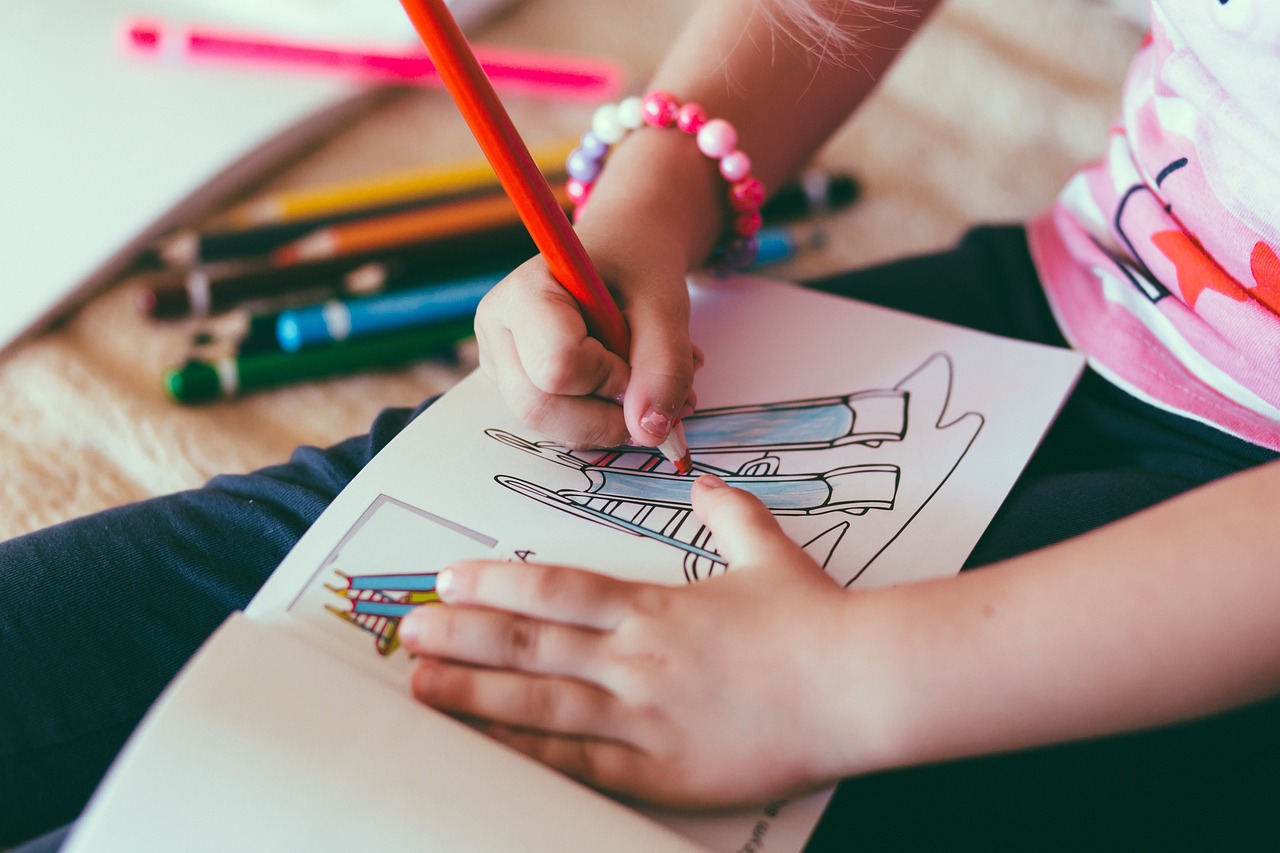
Best Practices for Paper Selection
When it comes to life drawing, selecting the right paper is not just a matter of preference; it can significantly impact your overall drawing experience. The type of paper you choose can affect everything from the texture of your lines to the vibrancy of your shading. Here are some best practices to keep in mind when selecting paper for your life drawing sessions.
First and foremost, consider the weight of the paper. Heavier paper, typically ranging from 200 to 300 gsm (grams per square meter), is ideal for various mediums, including charcoal and ink. Lighter paper, on the other hand, may be suitable for pencil sketches but can buckle or tear under heavy applications of wet media. Therefore, if you plan to experiment with different drawing tools, opt for a heavier stock that can withstand various techniques.
The texture of the paper is another critical factor. Smooth papers are excellent for fine details and precise lines, making them perfect for contour drawing. Conversely, textured papers can add an interesting dimension to your sketches, enhancing the overall aesthetic. For instance, if you're using charcoal or pastels, a paper with a bit of tooth can help grip the medium better and allow for richer tones.
Size matters too! While most artists gravitate towards standard sizes like A4 or A3, don’t hesitate to experiment with larger formats. Larger sheets can give you the freedom to explore dynamic poses and full-body drawings without the constraints of smaller pages. However, if you're on the go, smaller sketchbooks can be just as effective for quick studies and practice.
To help you make an informed decision, here’s a quick comparison of popular types of drawing paper:
| Paper Type | Best For | Characteristics |
|---|---|---|
| Sketch Paper | Pencil and charcoal | Lightweight, smooth texture |
| Watercolor Paper | Watercolor and mixed media | Heavyweight, textured surface |
| Mixed Media Paper | Various media | Versatile, can handle wet and dry media |
Lastly, always remember to test your paper before diving into a full drawing session. Create small sketches or swatches to see how your chosen medium interacts with the paper. This simple step can save you from potential frustration during your actual drawing. By following these best practices, you'll not only enhance your drawing experience but also develop a deeper connection with your art.
- What weight of paper should I use for life drawing? It’s best to use paper that is 200 to 300 gsm for heavier mediums like charcoal and ink, while lighter papers can suffice for pencil sketches.
- Can I use watercolor paper for pencil drawings? Yes, watercolor paper can be used for pencil drawings, especially if you prefer a textured surface that adds depth to your work.
- How do I know what size paper to choose? It depends on your drawing style and preferences. Larger sizes allow for more freedom, while smaller sizes are great for quick studies.

Essential Drawing Techniques
When it comes to mastering life drawing, understanding and practicing is key. These techniques not only enhance your ability to depict the human form but also foster a deeper connection between your eye and hand. Imagine trying to capture the essence of a living being on paper; it’s like trying to bottle a fleeting moment of beauty. To do this effectively, you need to harness a variety of techniques that will allow you to express movement, depth, and emotion in your artwork.
One of the foundational techniques to grasp is gesture drawing. This method focuses on capturing the essence and movement of the model in a short amount of time, typically ranging from 30 seconds to 5 minutes per pose. Gesture drawing encourages spontaneity and fluidity, allowing artists to sketch the overall form without getting bogged down by details. Think of it as creating a quick snapshot of a moment, much like a photographer capturing a candid shot. The goal is to convey the energy and motion of the pose rather than the precise anatomy.
Next, we have contour drawing, which emphasizes the outline of the subject. This technique requires you to observe the model closely and draw their contours without looking at your paper. It’s like tracing the invisible lines that define their shape. This practice not only sharpens your observational skills but also enhances your hand-eye coordination. It’s a great way to develop a more intimate understanding of the subject you’re drawing.
Another critical technique is shading. Shading adds depth and dimension to your drawings, transforming flat images into lifelike representations. By understanding light sources and how they interact with forms, you can create shadows and highlights that give your work a three-dimensional quality. Think about how the sun casts shadows on your face; by mimicking this effect in your drawings, you can create a sense of realism that pulls viewers into your artwork.
Here’s a quick overview of these essential techniques:
| Technique | Description | Purpose |
|---|---|---|
| Gesture Drawing | Quick sketches capturing movement and essence | To convey energy and spontaneity |
| Contour Drawing | Drawing outlines without looking at the paper | To enhance observation and hand-eye coordination |
| Shading | Adding depth through light and shadow | To create a three-dimensional effect |
As you practice these techniques, remember that the journey of life drawing is not just about the final product but the process of learning and exploration. Each stroke of your pencil is a step towards understanding the complexities of the human form. So, don’t shy away from experimenting with different approaches and styles. The beauty of art lies in its subjectivity, and your unique perspective is what will ultimately make your work stand out.
- What is the best way to start life drawing? Begin with gesture drawing to loosen up and capture the essence of the model.
- How often should I practice drawing? Aim for daily practice, even if it’s just for a short time, to build and maintain your skills.
- Do I need expensive materials to start drawing? Not at all! Basic pencils and paper are sufficient to begin your life drawing journey.
- Can I draw from photographs instead of live models? While drawing from photos can be helpful, working with live models enhances your observational skills and understanding of anatomy.

Understanding Human Anatomy
When it comes to life drawing, is not just a bonus; it's a necessity. Imagine trying to build a house without knowing how to lay a solid foundation. Just like that, grasping the structure of the human body provides artists with the essential tools to create realistic and dynamic figures. The human form is a complex interplay of bones, muscles, and skin, and knowing how these elements work together allows artists to depict movement, emotion, and realism in their artwork.
One of the first steps in mastering life drawing is to get familiar with the proportions and measurements of the human body. For instance, did you know that the average adult human figure is about 7.5 heads tall? This guideline can serve as a reference point when sketching, helping you maintain accurate proportions. Understanding the basic framework of the body also aids in capturing various poses. A common method is to use a proportion chart, which outlines the relative sizes of different body parts. Here’s a simple breakdown:
| Body Part | Proportion |
|---|---|
| Head | 1 unit |
| Torso | 2-3 units |
| Legs | 4 units |
| Arms | 2.5 units |
Next, let’s dive into the muscle structure and how it influences the body’s appearance, especially in motion. Muscles not only provide shape but also dictate how a figure moves. For example, when an arm is raised, the muscles in the shoulder and upper arm work together to create that motion. Understanding the major muscle groups, such as the biceps, triceps, and deltoids, can help you render more dynamic and lifelike poses. It’s almost like learning to play an instrument; the more you know about the mechanics, the better you can express yourself.
To illustrate this further, consider how different poses can highlight certain muscle groups. For instance:
- Standing Pose: Emphasizes the legs and core muscles.
- Reaching Pose: Highlights the shoulders and arms.
- Sitting Pose: Focuses on the curvature of the spine and the interplay between the torso and legs.
By observing how muscles engage during various movements, you can create more expressive and accurate representations of the human form. Remember, the goal isn’t just to replicate what you see but to convey a sense of life and motion in your drawings.
In summary, understanding human anatomy is fundamental to mastering life drawing. It provides a framework for capturing the complexities of the human body, from proportions to muscle dynamics. The more you study and practice, the more intuitive your drawing will become, allowing you to create art that resonates with viewers on a deeper level.
Q: Why is understanding anatomy important for artists?
A: Anatomy helps artists accurately depict the human form, enhancing realism and expression in their work.
Q: How can I improve my understanding of human anatomy?
A: Regular practice, studying anatomy books, and attending life drawing sessions can significantly improve your understanding.
Q: Are there specific resources for learning anatomy for artists?
A: Yes, there are many books, online courses, and anatomy reference websites tailored for artists.

Proportions and Measurements
When it comes to life drawing, understanding proportions and measurements is vital for capturing the human form accurately. Think of proportions as the blueprint of the body; they guide you in creating a realistic representation. The classic approach to proportions is based on the "head measurement" system. This method suggests that an average adult human figure is approximately 7.5 to 8 heads tall. By using the head as a unit of measurement, you can ensure that the rest of the body aligns correctly.
To break it down further, consider the following key ratios:
- The width of the shoulders is typically about 2 to 3 heads wide.
- The length of the arms, when extended, roughly equals the height of the body.
- The legs make up about half of the total height, with the knees falling around the halfway point.
These proportions can vary based on individual anatomy, so it's crucial to observe your model closely. For instance, some people may have longer torsos or shorter legs, and this variability is what makes life drawing both challenging and rewarding. As you practice, try to measure different parts of the body relative to one another. You can use a simple tool like a pencil or your finger to gauge distances and angles, which will help you maintain accuracy.
Another effective technique is the "sighting" method. This involves holding your pencil at arm's length and using it to measure the proportions of your model. By aligning your pencil with specific points on the body, you can create a visual reference that aids in achieving correct proportions. Remember, it’s about developing a keen eye for detail and understanding how different body parts relate to each other.
Moreover, understanding proportions isn’t just about the static pose. When your model moves, the proportions shift. For instance, when a person raises their arm, the shoulder and torso angles change, affecting the overall balance of the figure. Therefore, practicing with live models in various poses will enhance your ability to capture these dynamic changes.
In summary, mastering proportions and measurements is a fundamental skill in life drawing. It requires practice and patience, but with time, you’ll develop an intuitive sense of how to represent the human body accurately. Keep sketching, keep observing, and let your understanding of proportions grow alongside your artistic skills.
- What are the best ways to practice proportions in life drawing?
Regularly sketch live models, use the head measurement system, and practice sighting techniques to improve your understanding of proportions. - How can I adapt proportions for different body types?
Observe and measure each model individually, noting their unique proportions, and adjust your approach accordingly. - Are there any resources for learning more about human anatomy?
Yes! There are many books and online courses dedicated to human anatomy for artists that can provide valuable insights.
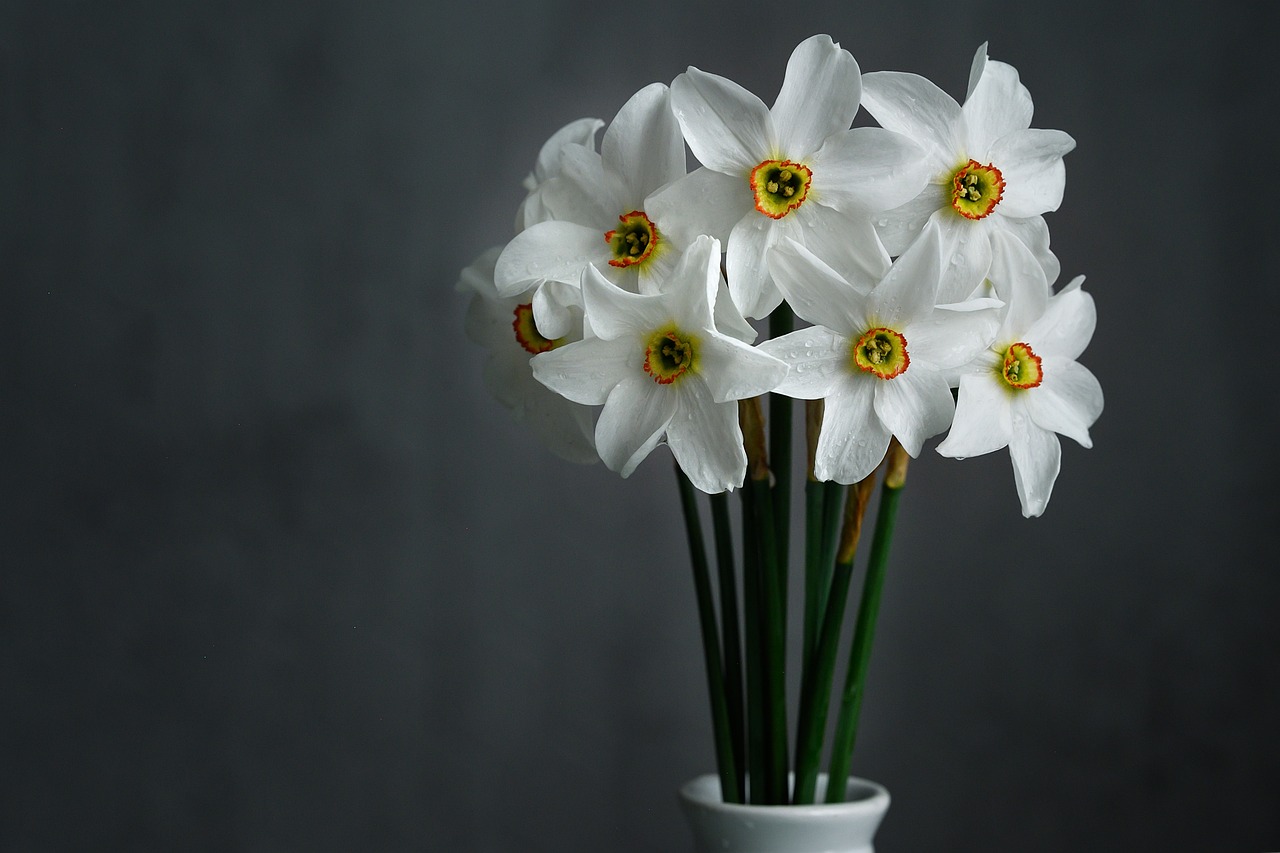
Muscle Structure and Movement
Understanding muscle structure is essential for any artist looking to capture the human body in motion. Muscles are the driving force behind all movement, and their arrangement and function significantly influence how we perceive and portray the human form. When you observe a model, you’re not just looking at the surface; you’re witnessing a complex interplay of muscles working together to create dynamic poses.
To truly grasp how muscles affect movement, it’s helpful to break down the muscle groups and their functions. For instance, the major muscle groups include:
- Chest Muscles (Pectorals): These muscles are crucial for movements such as pushing and lifting.
- Back Muscles (Latissimus Dorsi): Responsible for pulling movements, they also help in maintaining posture.
- Arm Muscles (Biceps and Triceps): Essential for flexion and extension of the elbow, these muscles are highly visible during various poses.
- Leg Muscles (Quadriceps and Hamstrings): These muscles play a significant role in locomotion and stability.
When a model strikes a pose, the muscles engage in a way that creates tension and relaxation, resulting in a unique silhouette. This is where your observational skills come into play. Noticing how muscles bulge or contract can help you depict movement more accurately. For example, when a model raises their arm, the biceps contract while the triceps relax, creating a clear distinction in the arm's shape.
Moreover, understanding muscle movement can also enhance your ability to illustrate dynamic poses. When you draw a figure in motion, consider how the muscles adapt to the movement. For instance, in a running pose, the muscles of the legs, core, and arms all work in harmony, creating a sense of flow and energy. Capturing this movement can make your artwork come alive!
Incorporating knowledge of muscle structure into your life drawing practice not only improves your accuracy but also deepens your understanding of human anatomy. This knowledge can be your secret weapon in creating more compelling and realistic figures. So, the next time you sit down for a life drawing session, take a moment to observe how the muscles interact with each other and the overall form. It’s not just about what you see, but about what’s happening beneath the surface. Remember, every line you draw should tell a story of movement and life!
- Why is understanding muscle structure important for artists?
Understanding muscle structure helps artists accurately depict movement and the human form, leading to more realistic and compelling artwork. - How can I improve my observation skills in life drawing?
Practice regularly, study anatomy, and focus on how muscles interact during various poses to enhance your observational skills. - What are the best resources for learning about human anatomy?
Books, online courses, and anatomy apps can provide valuable insights into human anatomy and muscle structure for artists.
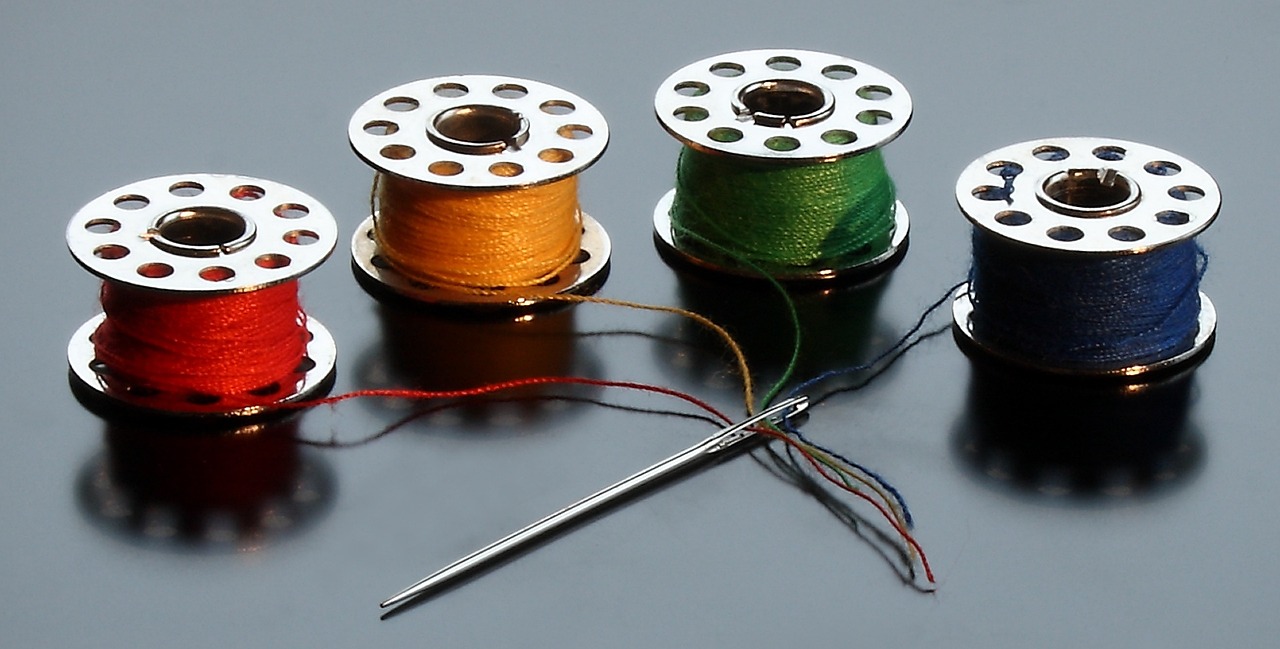
Finding the Right Model
Finding the right model for your life drawing sessions can be a game changer. Imagine trying to capture the essence of the human form without the right reference—it's like trying to paint a masterpiece without a canvas! Models play a crucial role in providing the **inspiration** and **realism** needed to enhance your drawing skills. But how do you go about selecting the ideal model? Well, it’s not just about finding someone who can hold a pose; it’s about creating a comfortable environment that fosters creativity and expression.
First and foremost, communication is key. Before a session, take the time to discuss expectations and preferences with your model. Are they comfortable with specific poses? Do they have any limitations? Clear communication not only helps in establishing a trusting relationship but also ensures that both you and your model are on the same page. Remember, a relaxed model will lead to more natural poses, allowing you to capture the subtleties of the human body.
When choosing a model, consider the following factors:
- Variety in Poses: Different poses can evoke different emotions and dynamics in your drawings. Look for models who can offer a range of poses, from static to dynamic.
- Body Types: Working with models of various body types can enhance your understanding of anatomy and proportion, making your drawings more versatile.
- Experience Level: Experienced models often know how to hold poses effectively, which can be beneficial for your practice.
Moreover, creating a conducive atmosphere is essential. Ensure that the space is comfortable, well-lit, and free from distractions. A peaceful environment allows both you and your model to focus on the task at hand. Consider playing soft background music to ease any tension and foster a creative vibe. Remember, the goal is to create a symbiotic relationship where both the artist and model can thrive.
Lastly, it's important to address the ethical considerations when working with models. Always prioritize respect and consent. Ensure that your model is comfortable with the poses and the environment. Discuss how the sketches will be used and make sure to maintain professionalism throughout the process. This not only builds trust but also enriches the overall experience for both parties.
Q: How do I find models for life drawing?
A: You can find models through local art schools, community centers, or online platforms dedicated to connecting artists with models. Social media groups can also be a great resource.
Q: What should I pay my model?
A: Compensation varies based on experience, location, and duration of the session. It's important to discuss rates beforehand and ensure that both parties are comfortable with the arrangement.
Q: How can I make my model feel comfortable?
A: Start by having an open conversation about their comfort levels, preferences, and any limitations. Create a welcoming environment and encourage breaks if needed.
Q: What if my model is inexperienced?
A: Inexperienced models can still provide valuable practice. Just be patient and guide them through poses. Communication is essential to help them understand what works best for your drawing style.

Choosing Models for Different Styles
When it comes to life drawing, the choice of model can significantly influence your artistic expression and the overall outcome of your work. Different models bring unique characteristics, body types, and poses, which can inspire a variety of styles and techniques. For instance, if you're aiming for a more realistic representation, you might opt for a model with a classic physique that embodies traditional proportions. On the other hand, if your goal is to explore abstract forms, you might choose a model whose body features exaggerated proportions or dynamic poses.
It's also essential to consider the diversity of models available. Working with models of different ages, ethnicities, and body types not only enriches your portfolio but also enhances your understanding of human anatomy and movement. For example, drawing a model with a more muscular build can help you focus on muscle structure and tension, while a model with a softer physique may allow you to explore fluidity and grace in your sketches.
Furthermore, the pose that a model strikes can dictate the style of your drawing. A dynamic, action-oriented pose can lead to a more energetic and expressive piece, whereas a static pose may lend itself to meticulous detail and realism. Here’s a quick overview of how different poses can affect your drawing style:
| Pose Type | Suggested Style | Focus Areas |
|---|---|---|
| Dynamic Pose | Expressive, Gestural | Movement, Energy |
| Static Pose | Realistic, Detailed | Proportions, Textures |
| Reclining Pose | Classical, Soft | Curvature, Light |
| Seated Pose | Contemplative, Introspective | Posture, Balance |
In addition to pose and body type, communication with your model is crucial. Make sure to discuss the style you're aiming for and any specific requirements you might have. This not only helps in achieving the desired outcome but also makes your model feel comfortable and valued. A relaxed atmosphere can lead to more natural poses and expressions, enriching your drawing experience.
Ultimately, the choice of model should reflect your artistic vision. Experimenting with various models can lead to unexpected discoveries in your drawing style, pushing your creativity to new heights. So, don't hesitate to try out different models and poses—each session can be a new adventure in the world of life drawing!
- How do I find life drawing models? You can find models through local art schools, community centers, or online platforms dedicated to artists.
- What should I discuss with my model before starting? Discuss the style of drawing you plan to do, any specific poses you have in mind, and ensure they are comfortable with the session.
- Can I use photographs instead of live models? While photographs can be helpful, drawing from life provides a deeper understanding of form, light, and movement.

Ethics and Professionalism
When it comes to life drawing, play a crucial role in creating a respectful and productive environment for both the artist and the model. It's essential to recognize that models are not just subjects; they are individuals deserving of respect and dignity. This consideration should be at the forefront of every artist's mind, as it fosters a positive atmosphere where creativity can flourish.
First and foremost, communication is key. Before a drawing session, it’s vital to have an open discussion with your model about comfort levels, boundaries, and expectations. This dialogue not only helps in establishing trust but also ensures that both parties are on the same page regarding the session's objectives. For instance, if a model feels uncomfortable with a particular pose or setting, it’s important to adapt and find a solution that respects their feelings.
Moreover, consent is non-negotiable. Always ensure that the model is fully aware of how their likeness will be used, whether for personal practice, public display, or commercial purposes. This transparency builds trust and reinforces the professional relationship between the artist and the model. It’s also essential to provide models with the option to withdraw consent at any time, respecting their autonomy and comfort.
Another aspect of professionalism in life drawing is maintaining a safe and comfortable environment. This means providing adequate privacy, appropriate breaks, and ensuring that the space is conducive to both drawing and posing. A well-lit, quiet space can enhance the experience for both the artist and the model, allowing for a more focused and enjoyable session.
Additionally, artists should be mindful of their behavior during sessions. It’s important to remain professional and avoid making inappropriate comments or gestures that could make the model feel uncomfortable. Remember, it's about the art, and the focus should remain on the drawing process and the model's contribution to that.
In conclusion, embracing ethics and professionalism in life drawing not only enhances the experience for everyone involved but also uplifts the art form itself. By fostering a respectful and considerate atmosphere, artists can create stunning works that genuinely reflect the beauty and complexity of the human form.
- What should I consider when selecting a model for life drawing?
Consider the model's comfort level, experience, and the variety of poses they can offer. Communication is key to ensuring a productive session.
- How do I ensure the model feels comfortable during the session?
Establish clear communication about boundaries and preferences, provide breaks, and create a private and safe environment.
- What are the ethical considerations in life drawing?
Always prioritize consent, respect the model's autonomy, and be transparent about how the drawings will be used.
- How can I improve my professionalism as a life drawing artist?
Maintain a respectful demeanor, communicate effectively, and create a comfortable working environment for your models.

Practicing and Improving Skills
When it comes to mastering life drawing, practice truly makes perfect. Just like a musician needs to play their instrument regularly to hone their skills, artists must commit to consistent drawing sessions to see significant improvement. One of the most effective ways to practice is to set up a dedicated drawing routine. This doesn’t mean you have to draw for hours on end every day; rather, find a schedule that works for you, whether it’s 30 minutes a day or a few hours a week. The key is to be consistent.
Incorporating a variety of exercises into your routine can also keep things fresh and exciting. For instance, you might dedicate one session to gesture drawing, focusing on capturing the essence of a pose in just a few minutes. In another session, you could delve into contour drawing, where you concentrate on the outlines and shapes of the subject. Mixing these techniques not only enhances your skills but also keeps your creative juices flowing.
Another crucial aspect of improving your life drawing skills is seeking constructive feedback. Sharing your work with peers, mentors, or online communities can provide valuable insights. Don’t shy away from critique; instead, embrace it! Feedback can illuminate areas for improvement that you might not notice on your own. Consider joining a local art group or participating in online forums where artists share their work and offer advice. Engaging with others not only helps you grow but can also inspire new ideas and techniques.
To effectively track your progress, it’s helpful to maintain a sketchbook. This sketchbook can serve as a personal diary of your artistic journey. Document your drawings, note the techniques you used, and reflect on what worked and what didn’t. Over time, you’ll be able to look back and see how far you’ve come, which can be incredibly motivating. You might even consider creating a drawing challenge for yourself, where you focus on a specific theme or technique each week.
Ultimately, the goal is to create a supportive environment for your artistic growth. This includes not only having the right tools and materials but also surrounding yourself with like-minded individuals who encourage you to push your boundaries. Remember, every artist was once a beginner, and the road to mastery is paved with practice, patience, and perseverance.
- How often should I practice life drawing?
It's recommended to practice at least a few times a week. Consistency is key, even if it's just for short sessions. - What if I don't have access to a live model?
You can use online resources, such as photo references or drawing apps, that provide poses for practice. - How do I know if I'm improving?
Keep a sketchbook to track your progress over time. Comparing older sketches with newer ones can show significant growth. - Is it necessary to take formal classes?
While classes can be beneficial, self-study and practice are equally effective. Use online resources, tutorials, and books to guide your learning.
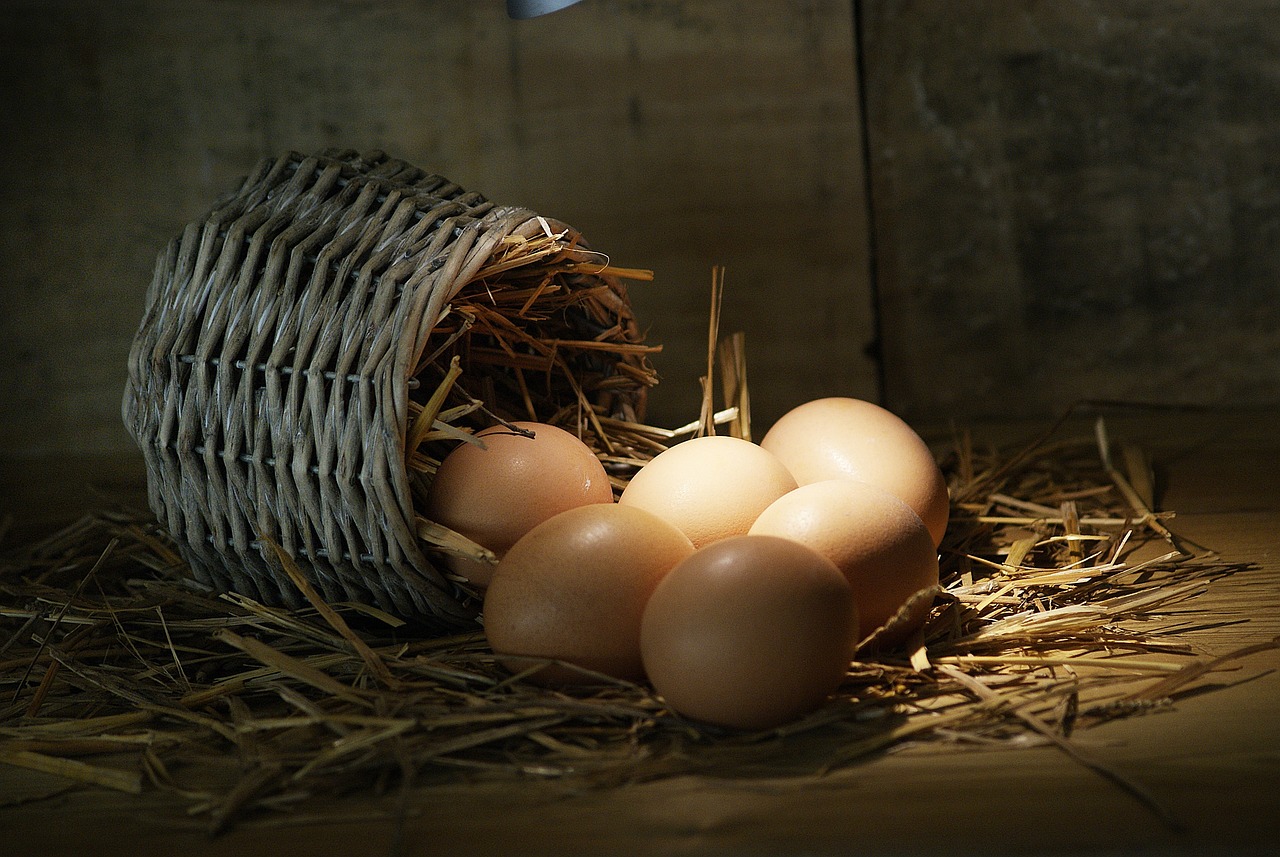
Setting Up a Drawing Routine
Establishing a consistent drawing routine is crucial for any artist aiming to improve their life drawing skills. Think of it as training for a marathon; just as runners don’t expect to complete a race without practice, artists need to hone their craft regularly. But how do you create a routine that sticks? Here are some key strategies to consider.
First, set aside dedicated time in your daily schedule for drawing. Whether it’s early in the morning, during your lunch break, or late at night, find a time that works best for you and stick to it. Consistency is key! You could start with just 30 minutes a day and gradually increase this as you get more comfortable. Imagine your drawing time as an appointment you can’t miss; this mindset will help you prioritize your practice.
Next, create a comfortable and inspiring workspace. Your environment plays a significant role in your creativity. Ensure your drawing area is well-lit, organized, and filled with materials you love. Surround yourself with inspiration—perhaps a few of your favorite artworks or even a vision board of your artistic goals. This will not only motivate you but also help you get into the right mindset for drawing.
Another effective strategy is to set specific goals for each drawing session. Instead of just saying, “I’ll draw today,” try something like, “I’ll focus on gesture drawing for 30 minutes.” This targeted approach helps you measure progress and keeps your sessions focused. You might even consider keeping a drawing journal where you note down what you worked on, what you learned, and what you want to improve next time. It’s a fantastic way to reflect on your journey.
Incorporating variety into your routine is also essential. While repetition is important, drawing the same subject repeatedly can lead to monotony. Challenge yourself by trying different poses, styles, or even mediums. One day you might focus on quick sketches of a live model, while the next could be dedicated to detailed studies of anatomy. This variety will not only keep things fresh but will also enhance your skills across different techniques.
Finally, consider joining a drawing group or community. Engaging with fellow artists can provide motivation and accountability. You can share your work, exchange feedback, and even participate in group drawing sessions. This social aspect can make your routine more enjoyable and enrich your learning experience. Plus, it's always encouraging to see others working hard towards their goals!
In summary, setting up a drawing routine involves creating a dedicated time for practice, establishing an inspiring workspace, setting specific goals, incorporating variety, and connecting with a community. By following these strategies, you’ll not only improve your life drawing skills but also cultivate a fulfilling artistic journey. Remember, every stroke of the pencil is a step closer to mastering your craft!
- How often should I practice life drawing? - Ideally, aim for at least a few times a week. Consistency is more important than duration.
- What should I focus on during my drawing sessions? - Focus on specific techniques, anatomy, or even experimenting with different styles.
- Can I draw at home, or do I need to attend classes? - You can absolutely practice at home! However, attending classes can provide valuable feedback and guidance.
- What if I don’t see immediate improvement? - Improvement takes time! Be patient with yourself and celebrate small victories along the way.
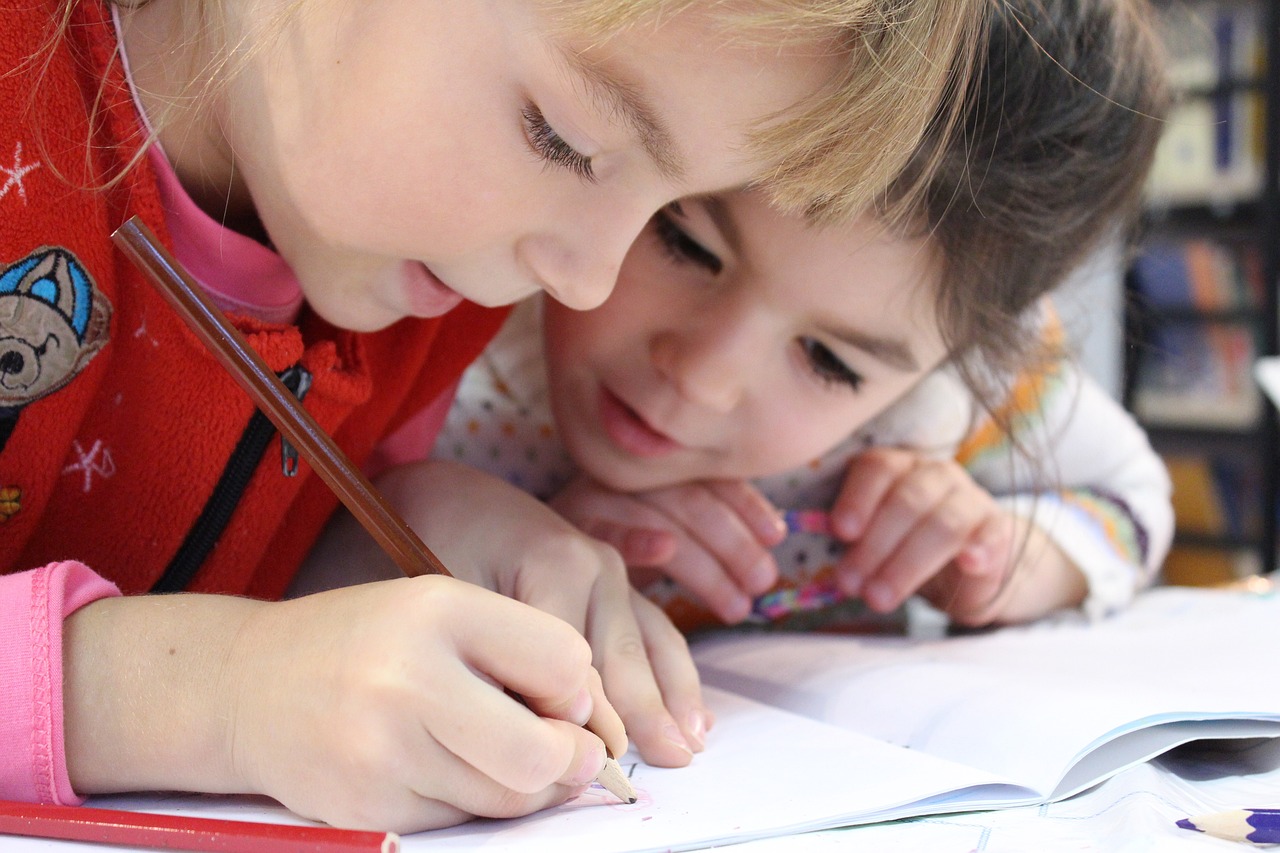
Seeking Critique and Feedback
As an artist, one of the most powerful ways to enhance your skills in life drawing is by actively seeking critique and feedback from others. This process can be intimidating, but it’s essential for growth. Imagine trying to navigate through a dense fog without a compass; feedback serves as that guiding light, illuminating areas for improvement that you might not see on your own.
When you share your work with others, you open yourself up to a wealth of perspectives. Each artist has their own unique experiences and insights, which can provide valuable information on how to refine your techniques. Whether it’s a fellow student, a mentor, or even a community of artists online, engaging with others allows you to gain constructive criticism that can elevate your art to new heights.
However, it’s important to approach feedback with an open mind. Not every critique will resonate with you, and that’s okay! The goal is to sift through the comments and identify consistent themes or suggestions that can help you improve. For instance, if multiple people mention that your proportions seem off, it’s worth taking a closer look at that aspect of your work.
Additionally, when seeking feedback, consider the following tips:
- Be Specific: When asking for critiques, specify what you want feedback on. Is it your shading technique, the overall composition, or the anatomy? This helps the reviewer focus their comments and makes the feedback more useful.
- Create a Safe Space: Encourage a supportive environment where honesty is valued, but so is respect. This will make others feel comfortable sharing their thoughts without fear of hurting your feelings.
- Reciprocate: Offer your insights and critiques in return. This not only helps others but can also deepen your understanding of art and drawing techniques.
Incorporating feedback into your practice can lead to significant improvements over time. Think of it like tuning a musical instrument; with each adjustment based on feedback, your skills will resonate more harmoniously. Remember, the journey of mastering life drawing is not a solo endeavor. Engaging with a community of artists can provide motivation, inspiration, and the critical feedback necessary to help you grow.
Q: How do I find people to critique my work?
A: You can join local art groups, online forums, or social media platforms dedicated to art. Websites like DeviantArt or Reddit's r/ArtCrit can be great places to share your work and receive feedback.
Q: What if I receive negative feedback?
A: Not all feedback will be positive, and that’s a part of the learning process. Take a moment to digest the comments and determine if there’s something constructive to learn from them. Remember, criticism is not a reflection of your worth as an artist.
Q: How often should I seek feedback?
A: It depends on your personal preference and comfort level. Some artists benefit from regular feedback after each piece, while others may prefer to seek it after they’ve completed several works. Find a rhythm that works for you!
Q: Should I only seek feedback from experienced artists?
A: While experienced artists can provide valuable insights, feedback from peers or even beginners can offer fresh perspectives. Everyone sees art differently, and diverse opinions can be enlightening.

Resources for Life Drawing
Embarking on the journey of mastering life drawing requires not only practice and dedication but also access to the right resources. Fortunately, there are numerous materials available that can significantly enhance your skills and understanding of this art form. Whether you're a beginner just dipping your toes into the world of life drawing or a seasoned artist looking to refine your techniques, these resources will serve as valuable companions on your artistic journey.
One of the most effective ways to learn is through books. There are countless titles that delve into the intricacies of life drawing, providing insights into techniques, anatomy, and the creative process. Some recommended books include:
- “Drawing on the Right Side of the Brain” by Betty Edwards - This classic book offers a unique perspective on drawing and perception, making it ideal for artists at any level.
- “Figure Drawing: Design and Invention” by Michael Hampton - A great resource for understanding the human form and creating dynamic poses.
- “The Natural Way to Draw” by Kimon Nicolaides - This book emphasizes the importance of observation and practice, guiding you through various exercises to improve your skills.
In addition to books, online courses have become increasingly popular, offering flexibility and a wide range of topics. Platforms like Skillshare, Udemy, and Coursera host numerous courses specifically tailored to life drawing. These courses often feature video tutorials, assignments, and feedback from instructors, allowing you to learn at your own pace. For example:
| Platform | Course Title | Instructor |
|---|---|---|
| Skillshare | Life Drawing: The Ultimate Guide | Jane Doe |
| Udemy | Figure Drawing Fundamentals | John Smith |
| Coursera | Understanding Human Anatomy for Artists | Emily Johnson |
Moreover, joining a community can be incredibly beneficial. Whether it's an online forum, a local art group, or social media platforms like Instagram and Facebook, connecting with fellow artists can provide motivation, support, and constructive feedback. Engaging with others allows you to share your work, seek advice, and learn from different perspectives. Sites like DeviantArt and ArtStation are excellent for showcasing your drawings and interacting with a vibrant community of artists.
Lastly, don’t underestimate the power of practice resources. Websites like Line of Action and QuickPoses offer timed drawing sessions with a variety of poses, helping you to improve your speed and accuracy. These platforms provide a fantastic way to challenge yourself and keep your skills sharp.
In conclusion, mastering life drawing is a multifaceted endeavor that greatly benefits from the right resources. By leveraging books, online courses, community engagement, and practice tools, you can cultivate your skills and deepen your understanding of this essential art form. Remember, the journey of an artist is continuous, and the more you explore and utilize these resources, the more proficient you will become.
Q: What is the best way to start with life drawing?
A: Begin with basic shapes and forms, focusing on gesture drawing to capture movement. Gradually incorporate more detailed anatomy studies as you progress.
Q: How often should I practice life drawing?
A: Consistency is key! Aim for at least 2-3 sessions per week to see significant improvement over time.
Q: Can I use photographs instead of live models?
A: While photographs can be helpful, drawing from life provides a deeper understanding of form, light, and shadow. It's best to incorporate both methods into your practice.
Q: What if I feel intimidated by drawing from a live model?
A: It's completely normal to feel nervous! Start with short poses and gradually increase the duration. Remember, practice makes perfect, and every artist has been in your shoes.

Recommended Books and Guides
When it comes to mastering life drawing, having the right resources at your fingertips can make all the difference. There are countless books and guides available that can provide invaluable insights, techniques, and inspiration for artists of all levels. Whether you're just starting out or looking to refine your skills, these resources can serve as both a foundation and a springboard for your artistic journey.
One highly recommended book is "Drawing on the Right Side of the Brain" by Betty Edwards. This classic guide emphasizes the importance of perception in drawing and offers exercises that help you see the world in a new way. Edwards' approach encourages artists to tap into their creative potential by shifting their focus from the subject itself to the shapes and forms that make up the subject.
Another essential read is "Figure Drawing: Design and Invention" by Michael Hampton. This book provides a comprehensive look at the human form, focusing on proportions, anatomy, and the principles of design. Hampton's clear illustrations and straightforward explanations make it easier for artists to understand complex concepts, making it a perfect companion for both beginners and advanced students alike.
For those interested in a more hands-on approach, "The Natural Way to Draw" by Nicolaides is a fantastic resource. This book is structured as a series of exercises that guide you through the process of drawing from life. It emphasizes the importance of gesture and movement, helping you to capture the essence of your subject quickly and effectively. The exercises are designed to develop your observational skills and boost your confidence as an artist.
In addition to these books, there are also numerous online resources that can supplement your learning. Websites like Skillshare and Coursera offer a variety of courses specifically focused on life drawing. These platforms feature lessons from experienced artists who share their techniques and tips, allowing you to learn at your own pace in the comfort of your home.
Furthermore, joining online communities or forums can provide a supportive environment where you can share your work, ask questions, and receive feedback from fellow artists. Platforms such as DeviantArt and Reddit's Art Fundamentals subreddit can be excellent places to connect with other life drawing enthusiasts.
In summary, the journey to mastering life drawing is enriched by the wealth of resources available. Books like "Drawing on the Right Side of the Brain", "Figure Drawing: Design and Invention", and "The Natural Way to Draw" offer foundational knowledge and practical exercises that can significantly enhance your skills. Coupled with online courses and community support, these resources can help you not only improve your technique but also inspire your creativity. So, grab a pencil, choose a resource, and start sketching your way to mastery!
Q: How often should I practice life drawing?
A: Consistency is key! Aim for at least a few sessions each week. Even short practice sessions can significantly enhance your skills over time.
Q: Do I need expensive materials to start drawing?
A: Not at all! You can start with basic materials like a sketchbook and a few pencils. As you progress, you can invest in higher-quality supplies.
Q: Can I learn life drawing without a model?
A: While working with a live model is ideal, you can also practice by using photographs or even drawing from your own reflection in a mirror.
Q: What if I feel intimidated by drawing the human figure?
A: It's completely normal to feel intimidated! Start with simple shapes and gradually build up to more complex forms. Remember, practice makes perfect!

Online Courses and Tutorials
In today's digital age, the world of art education has expanded beyond traditional classrooms, offering a plethora of that cater to aspiring artists at every skill level. Whether you're a beginner eager to learn the basics of life drawing or an experienced artist looking to refine your techniques, these resources can be invaluable. The beauty of online learning is that you can progress at your own pace, revisit complex topics, and practice in the comfort of your own space.
One of the most exciting aspects of online courses is the diversity of formats available. From video lectures to interactive assignments, these courses often include a variety of teaching methods that can cater to different learning styles. For example, some platforms offer live sessions where you can receive immediate feedback from instructors, while others provide pre-recorded content that you can access anytime. This flexibility allows you to tailor your learning experience to fit your schedule and preferences.
Here are some popular platforms where you can find excellent life drawing courses:
- Skillshare: This platform offers a range of courses on life drawing, focusing on techniques from renowned artists. You can often find classes that emphasize specific skills, such as gesture drawing or anatomy.
- Udemy: With a vast library of courses, Udemy features both beginner and advanced life drawing tutorials. Many courses are structured to provide step-by-step guidance, making it easier to follow along.
- Coursera: Partnering with universities, Coursera provides access to more formalized courses that cover life drawing within broader art programs. These courses often include assignments and peer reviews.
When selecting an online course, consider the following factors to ensure it meets your needs:
- Instructor Experience: Look for courses taught by experienced artists or educators who have a strong background in life drawing.
- Course Reviews: Reading reviews from previous students can give you insights into the course's effectiveness and content quality.
- Course Structure: Ensure the course offers a clear structure, including lessons, assignments, and feedback opportunities.
In addition to structured courses, numerous free tutorials are available on platforms like YouTube. These can be a great way to supplement your learning. Channels dedicated to art often provide tips and techniques for life drawing, breaking down complex concepts into manageable segments. Remember, the key to mastering life drawing is consistent practice and a willingness to learn from various sources.
As you embark on your journey to enhance your life drawing skills through online courses, keep in mind that the most important aspect is to stay engaged and motivated. Set achievable goals, and don't hesitate to experiment with different styles and techniques. The online art community is vast and welcoming, so feel free to share your work and seek feedback from fellow artists. This collaborative spirit can significantly enrich your learning experience and help you grow as an artist.
Q: What is life drawing?
A: Life drawing is the practice of drawing the human figure from a live model. It focuses on capturing the form, proportions, and movement of the body.
Q: How often should I practice life drawing?
A: Regular practice is crucial. Aim for at least a few sessions each week to see significant improvement in your skills.
Q: Do I need special materials for life drawing?
A: While basic materials like pencils and paper are sufficient, experimenting with different mediums can enhance your experience and results.
Q: Can online courses replace in-person classes?
A: Online courses are a great supplement to in-person classes, offering flexibility and a wide range of resources. However, in-person classes provide valuable live interaction and feedback.
Frequently Asked Questions
- What is life drawing and why is it important?
Life drawing is the practice of drawing the human figure from a live model. It's crucial for artists as it enhances observational skills, fosters creativity, and provides a solid foundation for various art forms. By studying the human body in real-time, artists learn to capture movement, proportion, and anatomy more effectively.
- What tools and materials do I need for life drawing?
Essential tools for life drawing include a variety of pencils (graphite, charcoal), high-quality paper (sketch, watercolor), erasers, and blending tools. Each of these materials contributes to the overall drawing experience, allowing for different techniques and effects. Choosing the right materials can significantly impact your final artwork.
- How can I improve my life drawing skills?
Improving life drawing skills requires consistent practice, so setting up a regular drawing routine is key. Additionally, seeking critique and feedback from peers or instructors can provide valuable insights. Don't hesitate to experiment with different styles and techniques, as this exploration can lead to significant growth as an artist.
- What should I consider when choosing a model?
When selecting a model for life drawing, consider their comfort, communication skills, and the variety of poses they can offer. Different body types and poses can influence your drawing style, so it's beneficial to work with a range of models to expand your artistic versatility.
- Are there ethical considerations in life drawing?
Absolutely! Ethics in life drawing primarily revolve around respect and consent. Always ensure that models are comfortable and have agreed to the terms of the session. Maintaining professionalism and creating a respectful atmosphere is essential for a positive drawing experience.
- What resources can help me in my life drawing journey?
There are numerous resources available for life drawing enthusiasts. Recommended books and guides can provide valuable insights and techniques, while online courses and tutorials offer flexible learning opportunities. Joining art communities can also connect you with fellow artists and provide further support and inspiration.



















